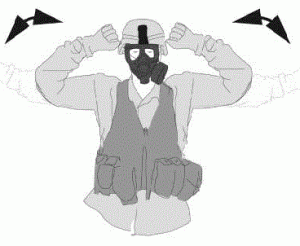Under ordinary circumstances, the U.S. Army relies on high-speed digital communications. But sometimes that is not an option, and soldiers must revert to more primitive methods.
“When electrical and/or digital means of communication are inadequate, or not available,” a new Army publication explains, messages may be transmitted “through the use of hand-and-arm signals, flags, pyrotechnics, and other visual aids.” Many of those alternate communication methods are described in Visual Signals, U.S. Army Training Circular TC 3-21.60, March 2017.
So, for example, “To signal ‘chemical, biological, radiological and nuclear attack,’ extend the arms and fists. Bend the arms to the shoulders. Repeat. (See figure 1-16.)”

Of course, hand and arm signals have limitations. For one thing, they may be misunderstood.
“Visual signals are generally contextual in nature. For example, the hand-and-arm signal for ‘take cover’ and ‘slow down’ are similar in their perspective movements, however the situation in which each is given is completely different.”
Also, “The range and reliability of visual communications are significantly reduced during periods of poor visibility and when terrain restricts observation.”
Finally, visual or gestural communications “are vulnerable to enemy interception and may be used for deception purposes,” the new Army publication said.
A deeper understanding of methane could help scientists better address these impacts – including potentially through methane removal.
While it is reasonable for governments to keep the most sensitive aspects of nuclear policies secret, the rights of their citizens to have access to general knowledge about these issues is equally valid so they may know about the consequences to themselves and their country.
Advancing the U.S. leadership in emerging biotechnology is a strategic imperative, one that will shape regional development within the U.S., economic competitiveness abroad, and our national security for decades to come.
Inconsistent metrics and opaque reporting make future AI power‑demand estimates extremely uncertain, leaving grid planners in the dark and climate targets on the line